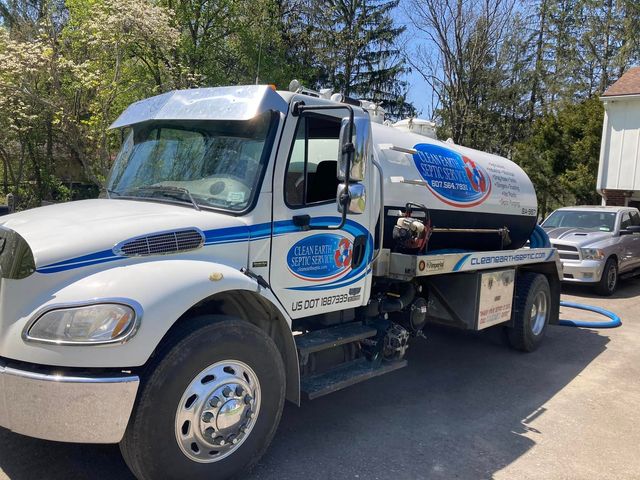The 10-Minute Rule for Stillwell Septic And Grading
The 8-Minute Rule for Stillwell Septic And Grading
Table of ContentsNot known Details About Stillwell Septic And Grading 7 Easy Facts About Stillwell Septic And Grading ShownHow Stillwell Septic And Grading can Save You Time, Stress, and Money.Things about Stillwell Septic And GradingStillwell Septic And Grading for DummiesStillwell Septic And Grading - An OverviewA Biased View of Stillwell Septic And Grading
Overall, septic system installation is an intricate procedure that requires careful planning and implementation. Property owners must collaborate with a trusted installment team and recognize regional laws and demands to ensure that their septic system functions correctly for many years ahead. After the septic system has been set up and attached to the drainpipe area, it is time to backfill the location.The backfill product should be devoid of clods, huge rocks, frozen issue, and debris that can result in gaps in the backfill that might allow settling over time. Squashed rock or pea crushed rock 1/2-inch in diameter is favored if indigenous products are not suitable. When the backfilling is total, it is time to landscape the location.
Once the septic tank has actually been set up, it is important to evaluate it to make sure that it is functioning correctly (Septic Tank Repairs). https://www.gaiaonline.com/profiles/stillwellsag/46605303/. Evaluating the system involves checking for leaks, ensuring that the storage tank goes to the appropriate level, and taking a look at the drain field. Among one of the most typical tests done is the hydraulic tons test
Stillwell Septic And Grading Can Be Fun For Anyone
The water is then kept track of to make sure that it streams correctly via the pipelines and right into the drainpipe field. If the water does not move properly or supports right into the tank, it might suggest a trouble with the system. An additional examination that is frequently executed is the dye examination.
The dye is then kept an eye on to ensure that it moves properly through the pipelines and right into the drainpipe area. If the dye does not flow properly or appears in the incorrect area, it may show an issue with the system. It is vital to have a specialist do these examinations to make sure that they are done appropriately.

Stillwell Septic And Grading - Questions
Below are some vital tips for house owners to maintain their septic system: The ordinary family septic tank should be inspected at the very least every 3 years by a septic solution expert. The frequency of pumping depends on the size of the container and the number of people utilizing it. https://www.taringa.net/stillwellsag/quality-septic-solutions-stillwell-septic-and-grading_5btwpt. A basic regulation of thumb is to pump the container every three to five years
Using water-efficient components and appliances, such as low-flow showerheads and bathrooms, can lower water use and assist the septic tank job extra effectively. Just flush toilet tissue and human waste down the bathroom. Prevent flushing anything else, including womanly health items, child wipes, and cooking oil, as they can block the system.
Indicators on Stillwell Septic And Grading You Should Know
Sewage-disposal tank installation is a complicated process that needs careful planning and execution. Property owners need to know the necessary actions associated with the setup process to make sure that their septic system operates appropriately and efficiently. The very first step is to evaluate the website where the septic tank will be mounted.
As soon as the site has actually been examined, the next step is to prepare for the installment. Property owners need to make sure that their service provider is experienced in septic storage tank setup and will function along with them throughout the procedure.
The Main Principles Of Stillwell Septic And Grading

Homeowners should understand the needed actions entailed in the setup process to guarantee that their septic tank operates appropriately and successfully. By adhering to these steps and keeping their look at this website system, home owners can rest assured that their septic system will certainly offer reliable wastewater therapy for years to find.
Virtually one in 5 U.S. homes have septic tanks. Yours might be one of them. If you're not properly preserving your septic tank, you're not just hurting the setting, you're placing your family members's health at riskand might be flushing hundreds of dollars down the drainpipe! Do Your Part, Be SepticSmart: The Do's and Do n'ts of Your Septic System.
Excitement About Stillwell Septic And Grading

All that extra water can really strain your septic tank. Startle making use of water-generating home appliances. This can be handy particularly if your system has actually not been pumped in a lengthy time. Come to be a lot more water effective by taking care of plumbing leaks and think about installing bathroom and kitchen area tap aerators and water-efficient items.
All About Stillwell Septic And Grading
Know your system's location. When you have the storage tank pumped, draw a layout or map showing its area in relation to fixed factors - edges of the residence, actions, or fencing articles.
Minimize the amount of wastewater that need to be treated and disposed of by your system: Laundry no even more than one or 2 tons of clothing daily. Up to 53 gallons of water flood your septic system with each tons, so it's best to spread out washing out over the week.